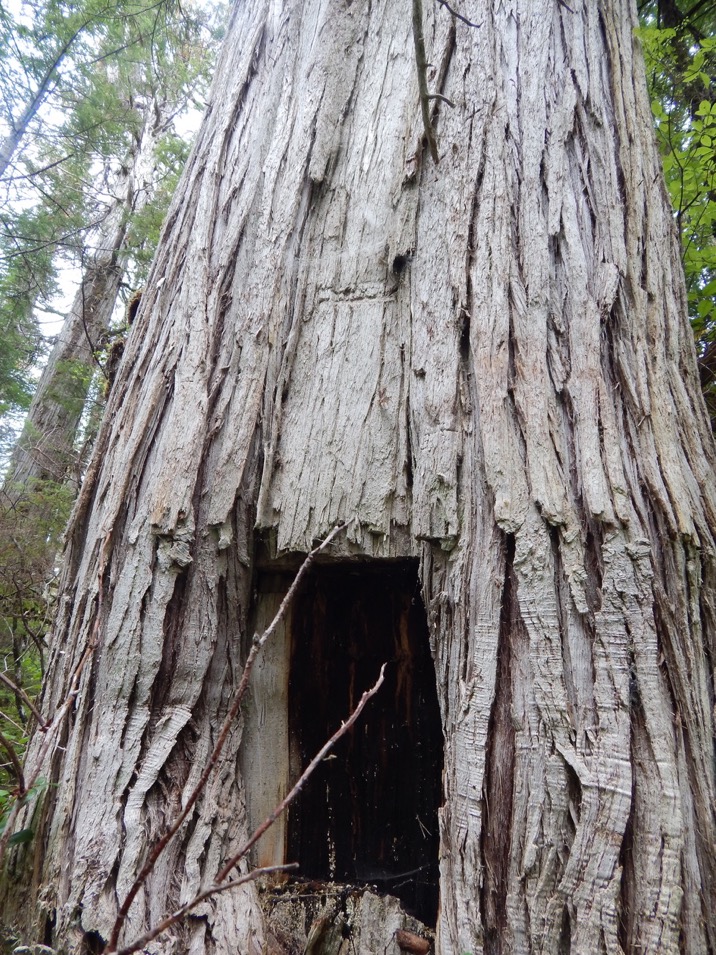The importance of
western redcedar and yellow cedar in our lives is immeasurable.
For many Coastal First Nations, redcedar is considered the “tree of life” – because of its spiritual and material importance. It is from cedars that we carve our canoes, our totems, and our masks. Traditionally many Coastal First Nations showed their respect to cedar by asking permission of the tree before removing its wood or bark. In the past, and still today, woven cedar bark baskets and hats are hallmarks of our culture. Throughout Húy̓at, many of the cedar trees had strips of bark removed from them in the past; they have now healed over and are ready to be stripped again. Some standing trees in Húy̓at have had one or more planks removed from them and archaeologists found one with two yew wood wedges still embedded in the tree. These bark-stripped and planked trees are examples of what are known as “culturally modified trees” (CMTs).

Our tending of trees and berries is also evident today in the red- and yellow cedar trees that retain the mark of many bark-stripping and plank-removal events. These “culturally modified trees” (CMTs), as they are known to archaeologists, reflect our tradition to space out the timing of stripping events so that each tree could regrow and heal.

Húy̓at redcedar tree with multiple long planks removed. (Photo credit: Julia Jackley)
Some of the bark-stripped trees were created by our Elders, when, as children, they helped collect bark for weaving baskets.

Húy̓at redcedar tree that has had a plank removed. (Photo credit: Julia Jackley)

Húy̓at redcedar tree with one burned “test hole” to determine the soundness of the inside wood. (Photo credit: Julia Jackley)
